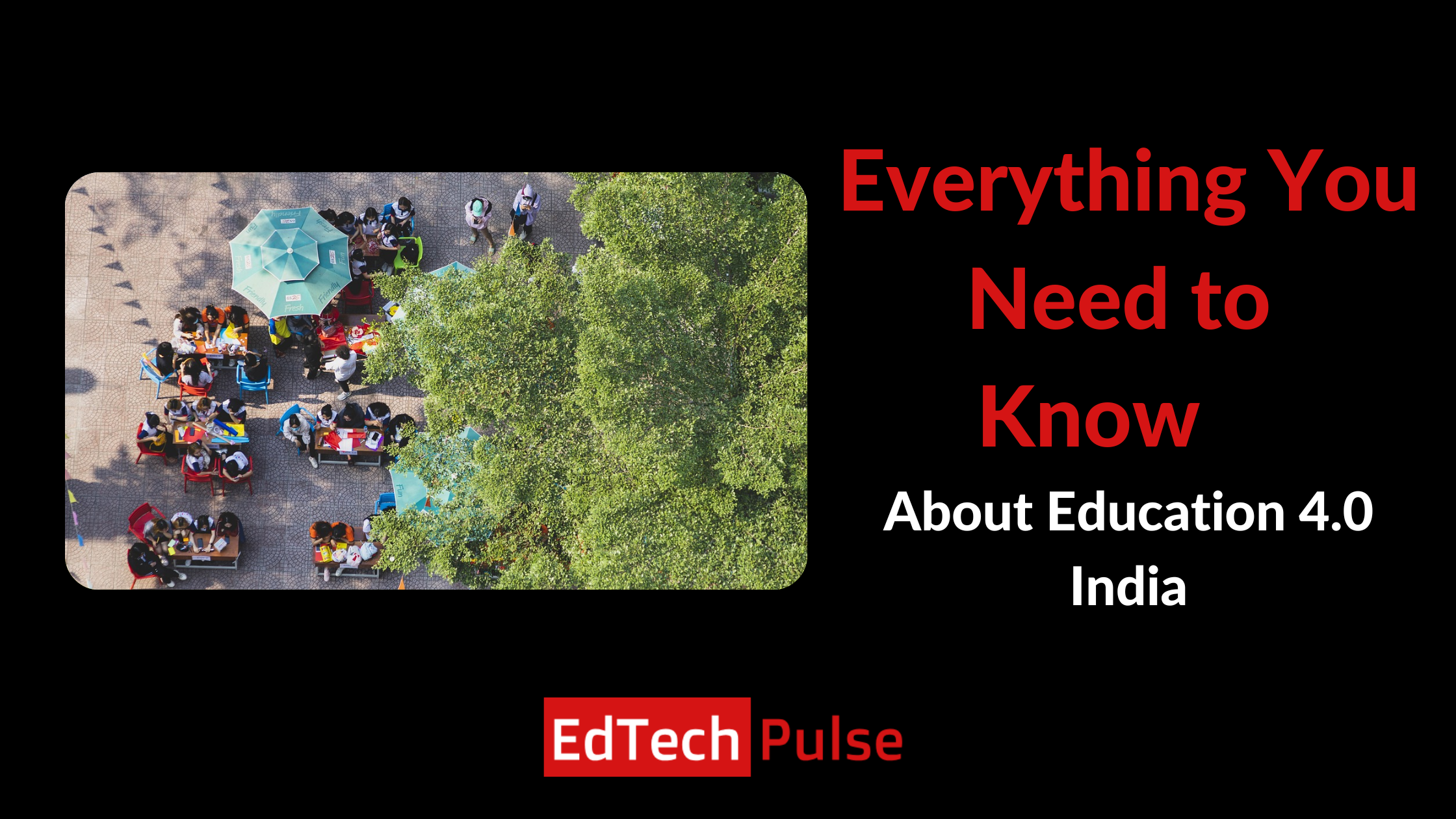Everything You Need to Know About Education 4.0 India
In the new millennium, technology began to permeate the educational process, and students and teachers began using technology in fundamental ways (otherwise known as Education 2.0).
Education 3.0 emerged due to technological advancements, such as the increasing adoption of a more user-generated internet. Students now have self-service access to knowledge, the option of online learning, and platforms for instant communication with teachers and peers.
Rather than focusing on students and teachers exchanging information, education has taken a more networked approach, with each student having a direct connection to various information sources.
This aided the development of a more individualized approach to education that valued the student's autonomy and unique learning style.
However, we are about to enter a brand-new era known as Education 4.0. Wondering what it is? Keep reading.
This guide will help you know what Education 4.0 is and how it helps students grow.
What Is Education 4.0?
Four industrial revolutions have occurred in the past 250 years; the most recent is Industrial Revolution 4.0. The signals indicate that change is inevitable in all fields, including education, making the term "Education 4.0" a household name among modern education specialists.
"Education 4.0" refers to a preferred method of teaching that aligns with the impending fourth industrial revolution. The main topics of this industrial revolution are innovative technology, artificial intelligence, and robots, which already impact our daily lives.
Universities must prepare their students for a world in which these cyber-physical systems are commonplace across all industries if they wish to keep graduating successful students. This includes incorporating technology lessons into the curriculum, completely changing how students learn, and leveraging technology to improve college life.
However, for career opportunities in the future, it will be beneficial. Along with earning their degrees, individuals may look for student job openings to gain experience, support themselves financially, and develop their collaboration and communication skills in preparation for future careers.
The efforts of everyone involved ensure that the Education 4.0 program assists the students in each way possible – be it through a positive change in approach, the introduction of novel teaching methods, and much more. Let’s now see how Education 4.0 helps students.
How Does Education 4.0 Help Students?
The Education 4.0 India initiative brought together over 40 partners from the education technology, government, academic, and start-up communities and aims to improve education and decrease access disparities among Indian pupils. Here are some ways in which education 4.0 will help students grow and achieve new skills:
1. An Innovative Approach to Education
Universities can successfully prepare their students for the fourth industrial revolution by aligning teaching and learning strategies with future capabilities. One approach is to promote accelerated remote learning, which entails students studying theoretical information remotely via digital methods while still receiving face-to-face instruction for practical skills.
As the gig economy grows, this more adaptable learning method necessitates accountability and effective time management. Students will also need to develop their ability to quickly adjust to new circumstances that may arise in their developing professions to transition to this method of working.
Rather than focusing on a set of skills directly related to a specific job position, project-based learning emphasizes the importance of learning a broad range of skills that can be applied to any scenario.
2. Specialized Learning Options
Higher education institutions are shifting toward a more personalized approach to education. Universities can detect troubled students through data and performance monitoring and then offer specialized learning options to match their needs.
As a result of embracing this analytics advancement, Education 4.0 treats each student as an individual, understanding that each person will have different learning requirements and objectives.
There have also been discussions about wholly customized degrees, in which a student can select modules from various programs rather than having to choose only one or two courses to study. However, some people are still skeptical of this strategy and see the deviation from the traditional degree structure as harmful.
3. Educating Children on a Rapidly Changing Industry
The extent to which various businesses integrate cyber-physical systems will undoubtedly impact the skills required by personnel. Because technology allows us to stay connected at all times, professional positions are gradually becoming more flexible and adaptive.
Education 4.0 aims to replace traditional education's clumsy, antiquated practices with innovation and a focus on the individual student. Education 4.0 emphasizes innovation-based education and 21st-century learning capabilities. Undoubtedly, universities must change and acknowledge that some old procedures must be modified to produce more graduates who are prepared for the future workplace.
Conclusion
This guide attempted to convey the current state of Education 4.0 in national and international contexts. It is critical to remember that management must allocate more funds to implement digital education systems at the institutional level.
They must also encourage students to integrate themselves into the modern classroom environment. Finally, the Institution and the Industries must adopt a project-based learning approach to work together in a collaborative environment.
The best way to prepare our students for a world that is always changing is through education 4.0. They will not only be prepared to support the sector, but it will also ensure that their skills are up to date, boosting their employability.
